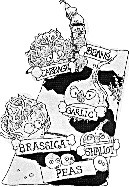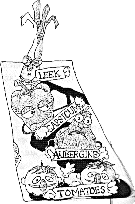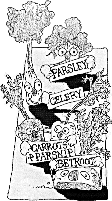|
|
|
New Zealand Garden Swap NewsletterGarden Swap Website - Newsletter Cover - Page 2 |
|
CROP ROTATION FOR THE FAMILY VEGETABLE GARDENDo you have a mental block each spring trying to work out what crops are to go where in the vegetable garden?
This is a permanent garden cycle, one that just flows on year after year. |
|
 GROUP 1 Legumes, brassicas, onions &
garlic GROUP 1 Legumes, brassicas, onions &
garlicAdd dolomite lime if needed, these plants like a sweet soil. Fertilise with animal manure. Peas. 2 half beds, sown autumn and spring. Beans. 2 half beds, early and late. Brassicas. 2 beds, over winter if room. Chinese Cabbages Onions. 1 or 2 beds, in early spring. Garlic & Shallots. 1 bed, in mid-winter, harvested at Xmas and then planted in late beans. |
 GROUP 4 Acid lovers & fruiting plants GROUP 4 Acid lovers & fruiting plantsHigh potassium/potash compost Comfrey liguid. Tomatoes. 1 beds. Capsicum & Aubergine. 1/2 bed, each at most. Leeks. 1 bed, for winter. |
 GROUP 2 Root Crops GROUP 2 Root CropsAvoid high nitrogen manures, use mature compost Carrots. 2 beds. Beetroot. 1 bed for harvest through winter. Parsnip. 1/2 bed, for winter. Celery. 1/2 bed. |
 GROUP 3 Leafy Crops GROUP 3 Leafy CropsUse animal manures and compost Corn. 2 beds, early and late. Zucchini. 2 half beds successively planted. Cucumber & Gherkins. 1/2 bed each, one or two plants of each. Silverbeet. 1/2 bed at most, could plant along a bed edge. Salad greens, endive, lettuces. Fitted in here and there. |